How To Reduce Ram Usage on Mac | How to Clear Memory on Mac
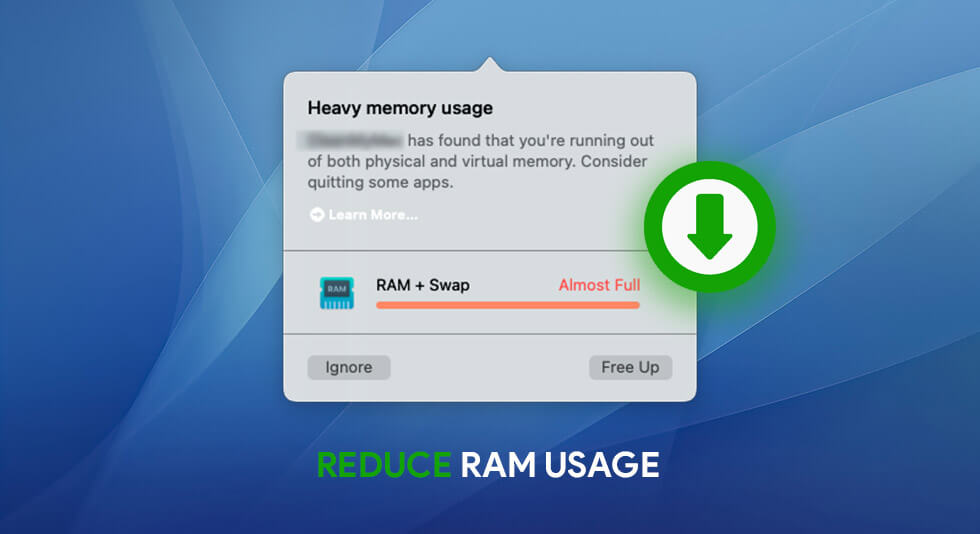
If you’ve ever experienced your Mac slowing down or freezing up, you know how frustrating it can be, right? Well, the good news is, there are simple and effective ways to free up memory on your Mac and get it running smoothly again.
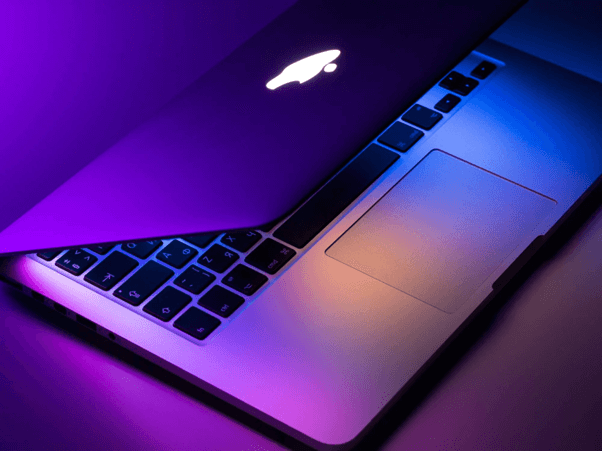
As you use your device, various applications and processes consume RAM, causing it to fill up. When the available RAM becomes limited, your Mac may slow down, lag, or even freeze.
In this blog post, we’ll walk you through step-by-step instructions, share expert tips, and provide you with valuable insights to optimize your Mac’s performance by reducing RAM usage. So, whether you’re a seasoned Mac user or new to the world of Apple, get ready to discover methods to reclaim your Mac’s memory and boost its speed.
Let’s dive in and explore our comprehensive guide on how to clear RAM on Mac.
How to Check RAM Usage on Mac?
Before we learn how to clear memory on Mac, you should be able to check the RAM usage of your device. This information can help you determine whether clearing the RAM might be necessary to optimize your Mac’s performance.
Here’s how you can do that:
Step 1: Open the “Activity Monitor” application on your Mac by heading to “Finder” > “Applications” > “Utilities” > “Activity Monitor”. Alternatively, you can also use the Spotlight search.
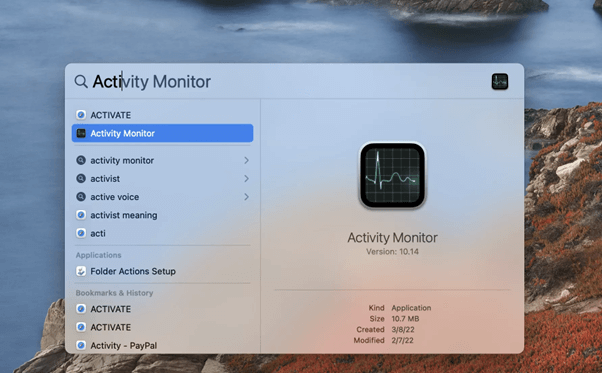
Step2: In the Activity Monitor window, you’ll see a list of processes and system resources. Switch to the “Memory” tab.
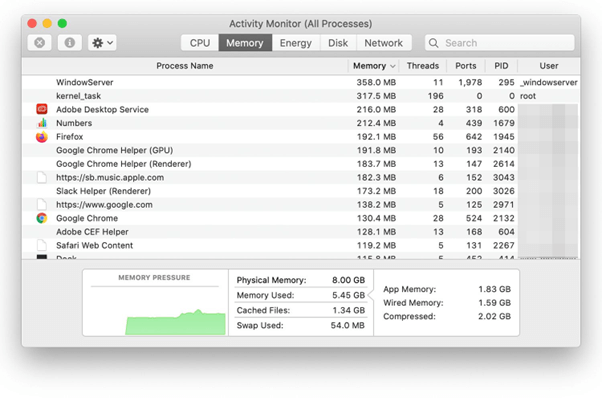
Step 3: In the “Memory” tab, you’ll find information about your Mac’s RAM usage. The “Memory Pressure” graph gives you an overview of how much RAM is currently being used. Green indicates low pressure, while yellow or red indicates higher usage.
Step4: Look for heavy RAM using apps to find the culprits.
By following these steps, you can easily monitor your Mac’s RAM usage and identify if it’s reaching its limits.
How to Check CPU Usage on Mac?
An overloading CPU can also be a trigger to degrade your Mac’s performance. Hence, it’s a good idea to check the CPU consumption of your Mac as well. Here’s how you can do so:
Launch the Activity Monitor tab and switch to the “CPU” tab. Review the apps with heavy consumption. You can click on the column header to sort the processes by CPU usage, with the highest usage at the top.
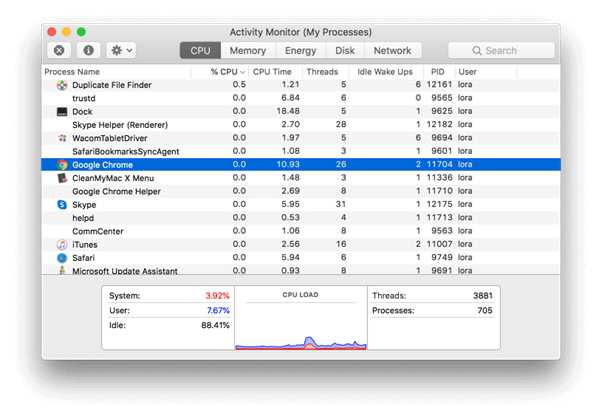
Also, if you want to get an overall view of CPU usage, you can check the “CPU Usage” graph at the bottom of the window. It shows the percentage of CPU usage over time.
How to Clear RAM on Mac to Optimize Performance
So, by now you have reviewed the RAM and CPU usage of your Mac, right? Well, high memory usage can significantly impact your Mac’s performance. Hence, moving on to our primary subject, let’s learn a few quick ways to clear memory on Mac to restore its snappy performance.
Method 1: Download and Install the Cleanup My System App
Get Cleanup My System
Cleanup My System is a powerful and comprehensive tune-up tool designed to optimize your Mac’s performance and reclaim its full potential. It is a professional solution to enhance your system’s speed, efficiency, and overall stability.
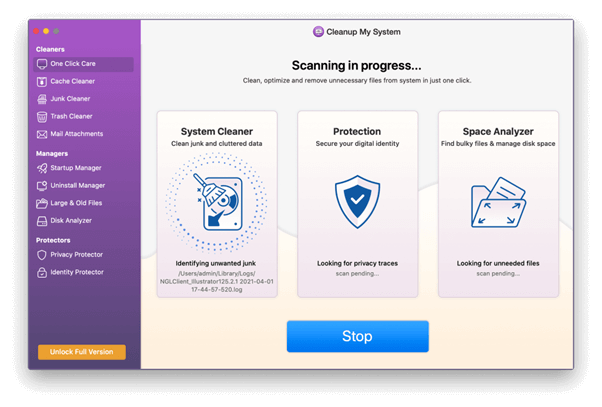
With the help of this tool, you can effortlessly clean up junk files, temporary data, and unused applications that clutter your Mac’s storage. By removing these unnecessary files, you’ll free up valuable disk space, allowing your system to operate more smoothly and efficiently.
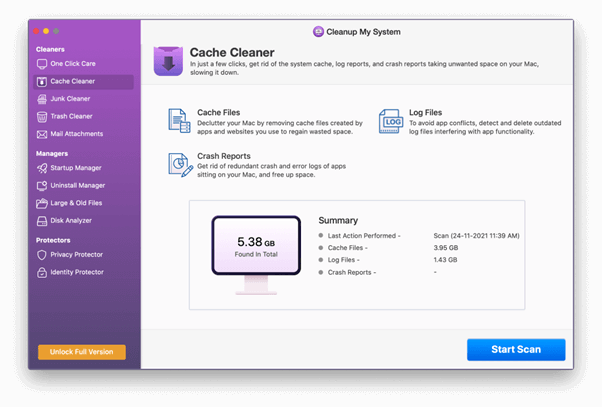
Additionally, CleanUp My System provides a comprehensive uninstall manager that ensures all remnants along with the unwanted applications are completely removed from your Mac. This helps optimize your system’s performance and prevents any potential conflicts or compatibility issues.
To further enhance your Mac’s speed, CleanUp My System offers a memory optimization feature. By intelligently managing your system’s memory usage, it frees up RAM and ensures that your Mac runs smoothly, even with resource-intensive applications.
With its user-friendly interface and intuitive controls, CleanUp My System empowers both novice and advanced users to easily optimize their Mac’s performance. Whether you’re a casual user looking for a quick tune-up or a power user seeking in-depth system optimization, CleanUp My System has you covered.
Get Cleanup My System
Method 2: Use the Terminal App to Clear RAM on Mac
Clearing RAM using Terminal on a Mac can help improve system performance by releasing memory that is being held by inactive processes. Here’s how to reduce RAM usage on Mac using Terminal:
Step 1: Launch the Terminal application. You can find it in the Applications> Utilities folder.
Step 2: In the Terminal window, type the following command and press the Return key:
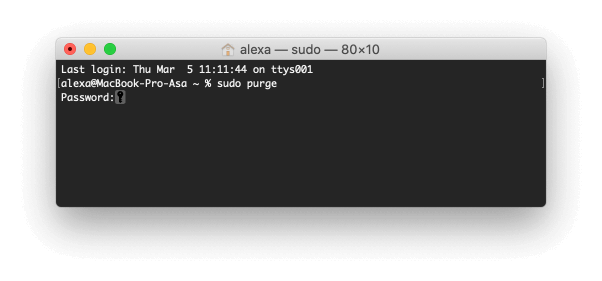
sudo purge
Step 3: You will be prompted to enter your administrator password. Enter the admin password to proceed.
Also read: How to Fix Permission Denied on Mac Terminal
Method 3: Clear Cache Files
Clearing cache files is essential too! Cache files can accumulate over time and occupy a significant amount of storage on your Mac. Deleting them can help reclaim disk space, especially if you’re running low on storage. Follow these steps to clear cache files on Mac:
Step 1: Open Finder and click on the “Go” menu.
Step 2: Choose “Go to Folder…” and type “~/Library/Caches” in the dialog box and hit Enter.
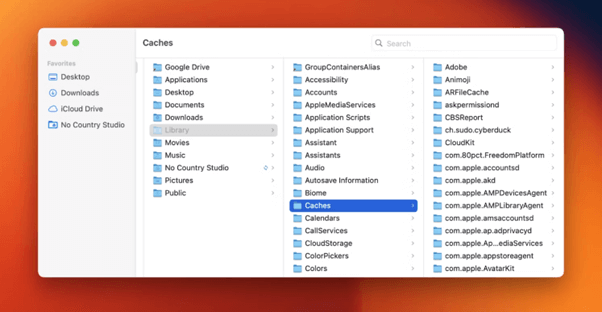
Step 3: Select the desired folders or all files within the directory.
Step 4: Move the selected items to the Trash.
Deleting the cache files may resolve the potential problems and improve your Mac’s overall performance.
Method 4: Declutter the Desktop
Having numerous files, folders, and shortcuts on your desktop can create visual clutter, which can be distracting and impact productivity. By organizing and decluttering your desktop, you create a cleaner visual environment that can help improve focus and workflow efficiency.
Decluttering your desktop can help improve system performance on a Mac, but it does not directly clear memory. However, it can indirectly contribute to freeing up system resources and improving overall efficiency.
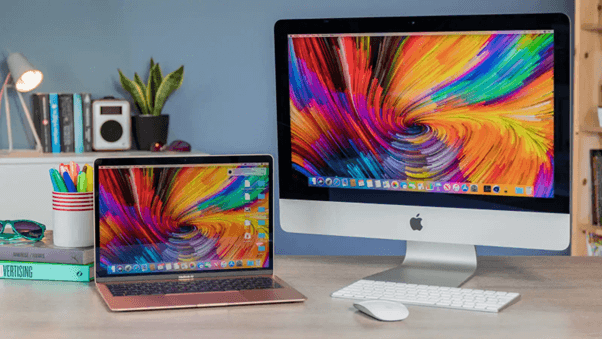
If you have an excessively cluttered desktop with a large number of icons, it can slightly impact system performance by consuming additional resources. By reducing the number of icons, you alleviate this resource usage and potentially improve the overall system. So, organize your files and folders to keep the desktop tidy!
Also read: How to Take a Screenshot on Mac Step-By-Step Guide
Method 5: Disable Login Items
Having too many login items enabled on your device can significantly impact your Mac’s speed and performance. Hence, it is recommended to disable the unwanted startup/login items to boost your device’s efficiency. To disable login items on Mac, follow these quick steps:
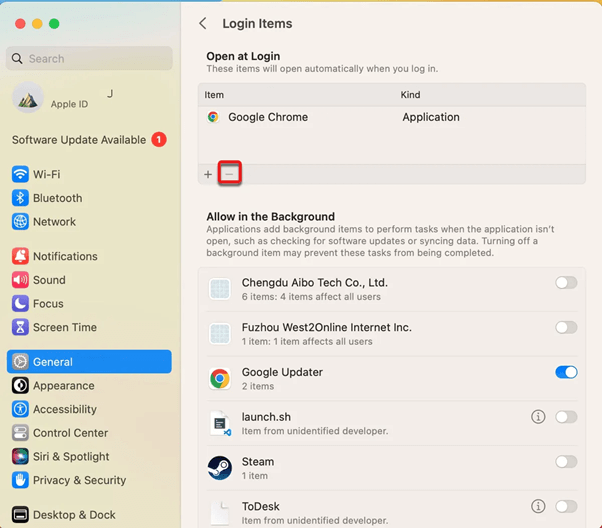
Open Mac’s Settings and head to General> Login Items. Review this list thoroughly and disable the startup items that are no longer needed.
Method 6: Clear Browser Cache and Cookies
To clear browser cookies and cache on a Mac, you can follow the steps below:
Step 1: Open Safari.
Step 2: In the menu bar, click on “Safari” and select “Preferences.”
Step 3: Go to the “Privacy” tab.
Step 4: Tap on the “Manage Website Data” button.

Step 5: You’ll see a list of websites and their associated data. Click on “Remove All” to delete all cookies and cache data, or select specific websites and click on “Remove” to delete data for those sites.
Step 6: Confirm the action by clicking on “Remove Now” in the pop-up window.
Method 7: Merge Windows
To reduce memory usage in Finder by merging windows, follow these steps:
Step 1: Open Finder on your Mac.
Step 2: If you have multiple Finder windows open, click on the “Window” menu in the menu bar.
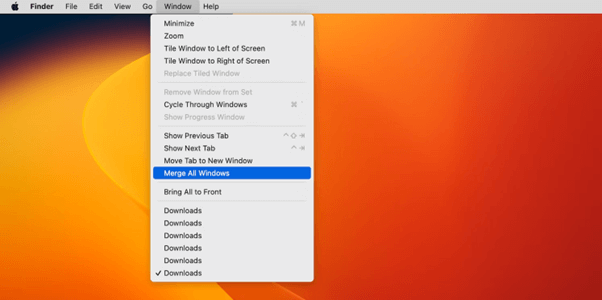
Step 3: Look for the option “Merge All Windows” and click on it.
This action combines all open Finder windows into a single window, reducing the memory usage associated with multiple windows.
Also read: How To Upgrade RAM on Macbook Pro
Conclusion
This wraps our guide on how to clear RAM on Mac. Optimizing RAM usage on your Mac can significantly enhance its performance and responsiveness. Additionally, keeping your macOS and applications up to date, as well as considering a RAM upgrade if needed, can further optimize your Mac’s performance.
Remember that maintaining a healthy balance between system memory and running applications is crucial for efficient multitasking and a seamless computing experience. With the help of these methods listed in this blog, you can keep your Mac running at its best and enjoy a more efficient and productive workflow.


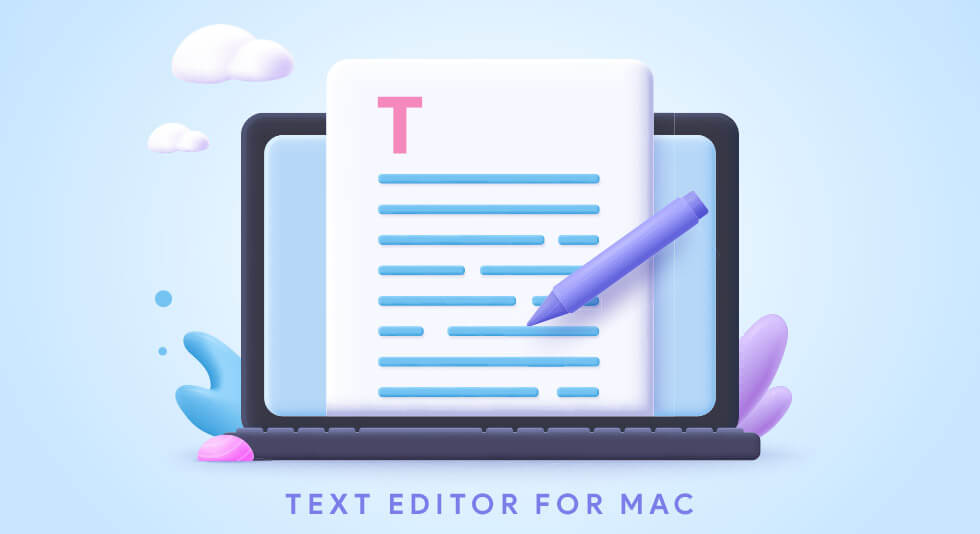 Best Text Editor For Mac (2024)
Best Text Editor For Mac (2024)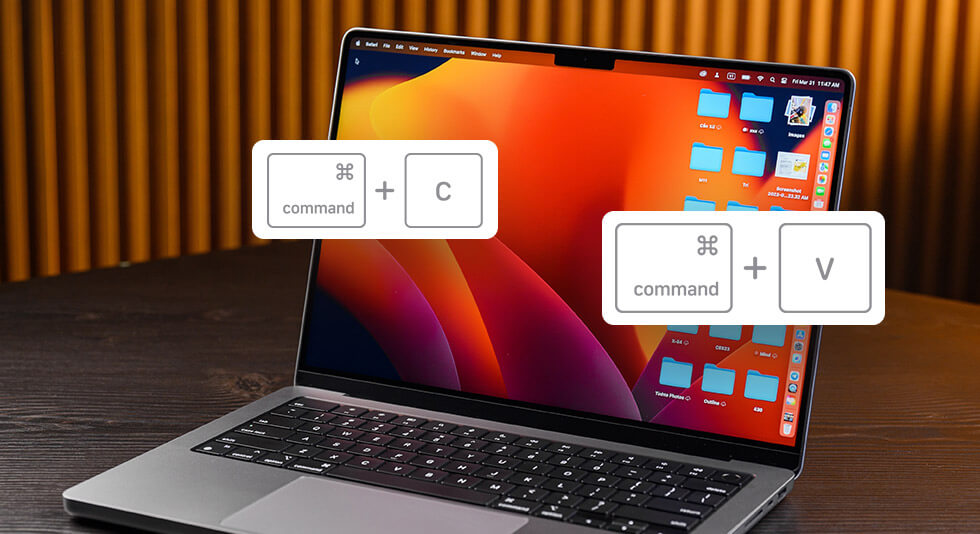 Quick Guide to Copy and Paste on MacBook: Enhancing Your Workflow
Quick Guide to Copy and Paste on MacBook: Enhancing Your Workflow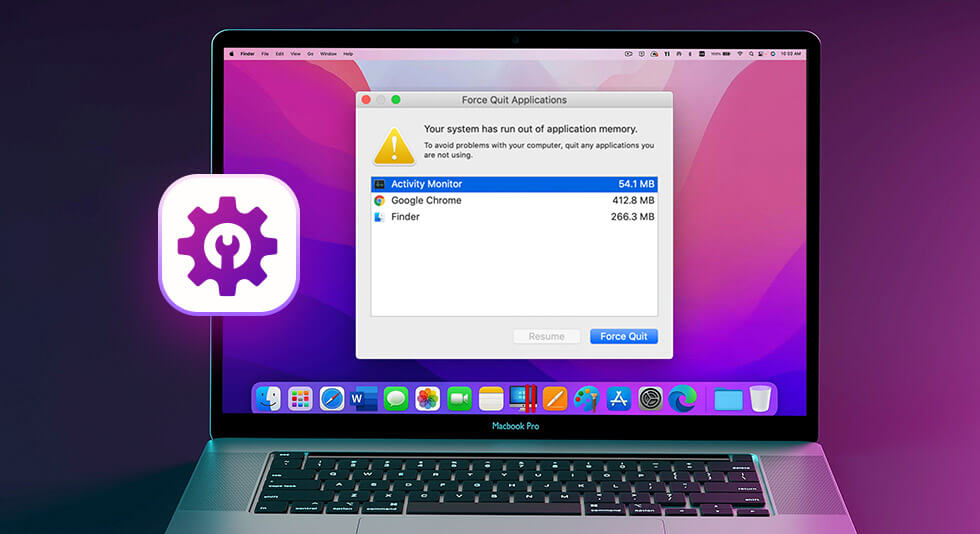 How To Fix “Your System Has Run Out Of Application Memory” Mac Error
How To Fix “Your System Has Run Out Of Application Memory” Mac Error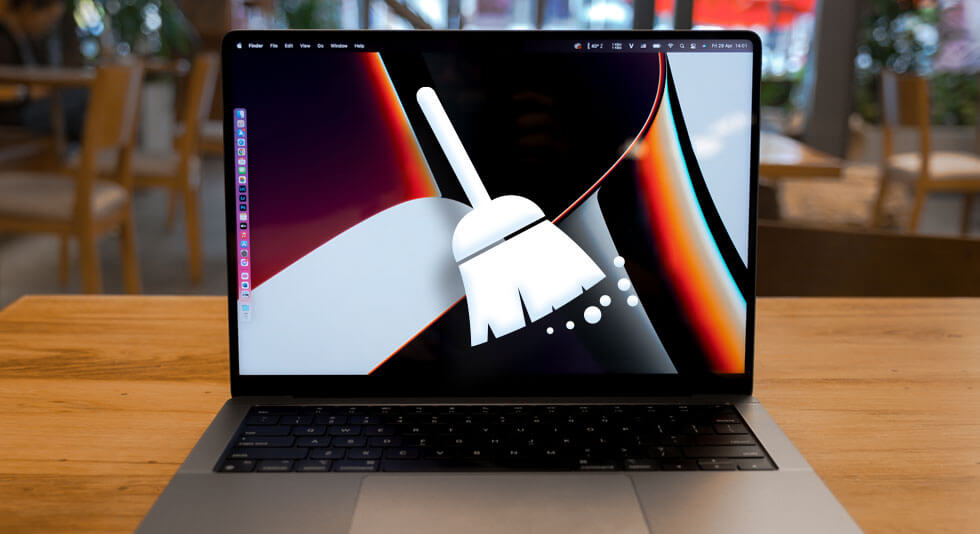 Best Memory Cleaner For Mac To Speed Up Performance In 2024
Best Memory Cleaner For Mac To Speed Up Performance In 2024